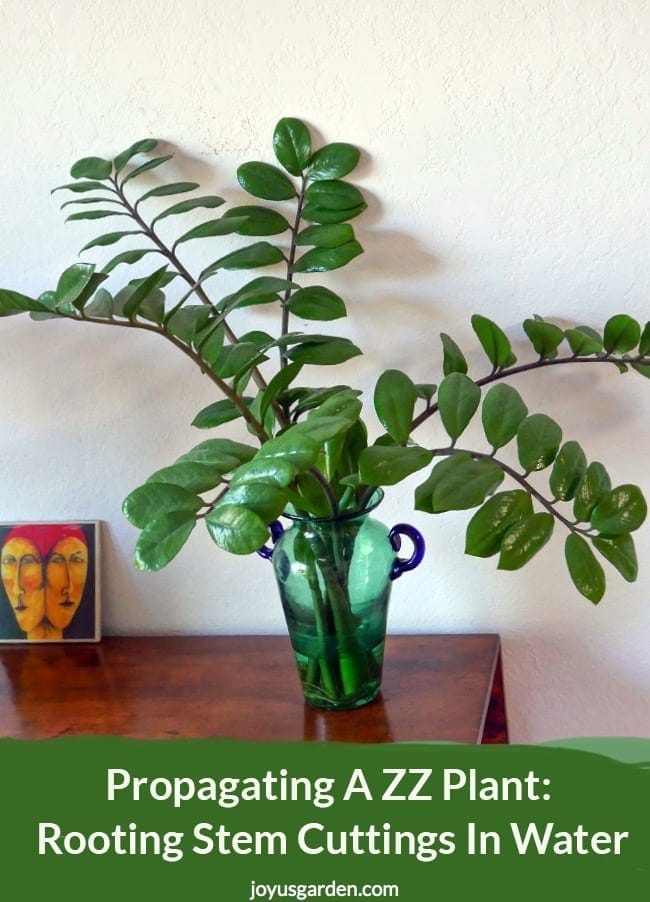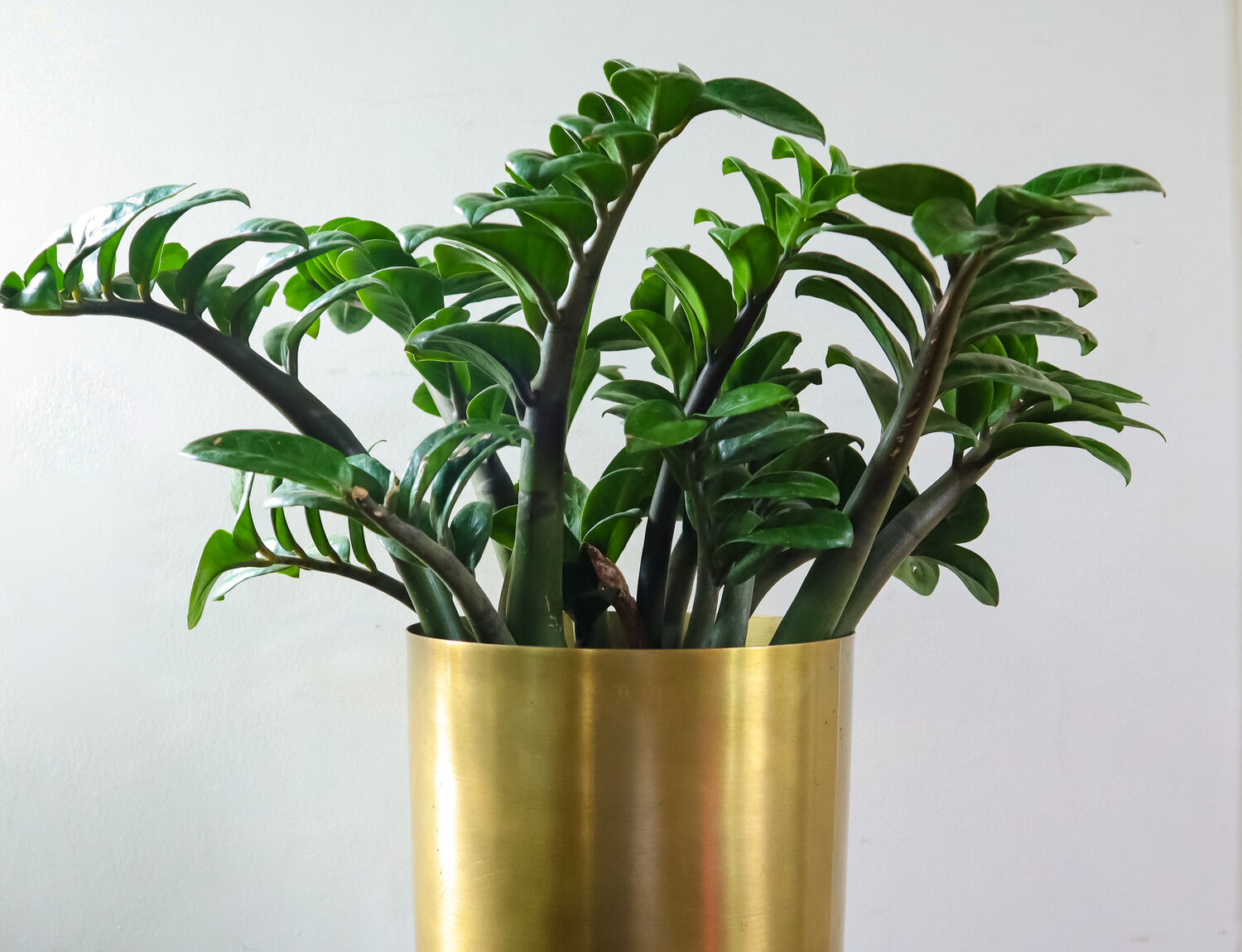To water a ZZ plant, allow the top inch of soil to dry out before thoroughly watering.

Credit: www.joyusgarden.com
Factors To Consider Before Watering
Before watering your Zz plant, there are some important factors to consider. First, assess the plant’s water requirements. Zz plants are known for their ability to tolerate drought, so it’s crucial to avoid overwatering. This plant thrives in well-draining soil, so ensure that the pot has proper drainage holes. Without sufficient drainage, excess water can lead to root rot and other issues.
When it’s time to water your Zz plant, thoroughly moisten the soil until water starts to drain out of the bottom of the pot. This ensures that the entire root system is hydrated. Allow the soil to dry out between waterings to prevent waterlogged conditions. Overwatering can cause the roots to become suffocated and lead to plant decline.
Remember, watering frequency may vary depending on factors like environmental conditions, pot size, and plant size. Therefore, monitor the moisture levels in the soil and adjust your watering schedule accordingly. By following these guidelines, you can provide the right amount of water to keep your Zz plant healthy and thriving.
How to Water ZZ Plant: Step by Step Guide
Watering The ZZ Plant
Proper watering of the Zz Plant is essential for its health and growth. To determine the ideal watering schedule, consider the following factors:
- The Right Frequency: Take into account the plant’s environment and the season. Zz Plants prefer slightly dry conditions, so ensure the topsoil is dry before watering again.
- Determining the Ideal Amount of Water: Avoid overwatering as it can lead to root rot. Allow the water to fully drain through the drainage holes, ensuring no excess water is left standing in the container.
- Choosing the Right Watering Technique: Water the plant directly at the base, avoiding the leaves, as wet foliage may cause fungal diseases. Use room temperature water to avoid shocking the plant’s roots.
Remember to always monitor the plant’s response to watering and make adjustments accordingly. By following these best practices, you can ensure your Zz Plant thrives in a well-maintained and properly watered environment.
Signs Of Overwatering And Underwatering
| Overwatering can be detrimental to a Zz plant’s health. Look out for yellowing leaves, which can indicate root rot caused by excess moisture. Other signs include wilted or droopy leaves and soil that feels consistently damp. Pay attention to fungus gnats as well, as their presence can suggest too much water. To prevent overwatering, ensure the plant is in a well-draining pot and only water when the top inch of soil feels dry. |
| Identifying Symptoms of Underwatering in the Zz Plant |
| Underwatering can cause stress to a Zz plant. Signs to watch for include dry and crispy leaves that may also have brown edges or tips. The soil may feel completely dry and pulling away from the sides of the pot. Lack of new growth and overall stunted appearance may also be evident. To remedy underwatering, try adjusting the watering routine to ensure the plant receives adequate moisture without overdoing it. |
| Responding to Overwatering and Underwatering Situations |
| When you notice signs of overwatering or underwatering, it is important to take immediate action. For overwatering, reduce watering frequency and ensure proper drainage. Consider repotting the plant in fresh, well-draining soil. Addressing underwatering involves increasing watering frequency and thoroughly hydrating the plant until water runs out from the drainage holes. It is also essential to maintain consistent environmental conditions and provide the Zz plant with appropriate sunlight and humidity levels to support its recovery. |
Efficient Watering Strategies For The ZZ Plant
Efficient watering strategies are crucial for the health and wellbeing of the Zz plant. One approach to consider is the “soak and dry” method, which involves thoroughly watering the plant and allowing the soil to dry out before watering again. This helps prevent overwatering and allows the roots to receive adequate oxygen. Alternatively, for added convenience, self-watering systems can be employed.
These systems automatically distribute water to the plant based on its needs, ensuring consistent moisture levels. Another useful tool to have is a moisture meter, which allows you to accurately gauge the soil’s moisture content and water accordingly. By utilizing these strategies, you can optimize the watering process for your Zz plant, promoting its growth and longevity.
Supplementing Watering With Proper Humidity And Light
Zz plants require an optimal humidity level to thrive. Proper humidity levels help prevent the leaves from becoming dry and brittle, ultimately affecting the overall health of the plant. To maintain suitable humidity, you can place a tray filled with water near the plant, use a humidifier, or mist the leaves regularly. **Monitoring humidity** levels using a hygrometer is recommended to ensure the desired range of 40% to 50% is maintained. **Maintaining humidity** is particularly important during winter months when indoor heating systems can dry out the air.
Light is another crucial factor in the care of Zz plants. **Positioning** the plant near a window or in a well-lit room is ideal, but direct sunlight should be avoided as it can scorch the leaves. **Indirect or filtered light** is the best option. If natural light is limited, you can supplement with artificial **grow lights**, ensuring they are placed at an appropriate distance to avoid burning the plant. **Regularly rotating** the pot can also help provide even lighting to all sides of the plant, promoting balanced growth.
To achieve the best growth for your Zz plant, it’s essential to strike a balance between humidity and light. **Finding the right balance** will help prevent issues such as drooping leaves or stagnant growth. Adequate humidity combined with suitable light conditions creates an optimal environment for optimum development. **Carefully monitoring** both factors and making adjustments as needed will support healthy foliage and overall plant health.
Frequently Asked Questions Of How To Water Zz Plant
Do You Water Zz Plants From The Top Or Bottom?
Water ZZ plants from the top. It’s best to pour water directly onto the soil to avoid getting the leaves wet. This prevents fungal growth and keeps the plant healthy. Make sure the water drains properly to prevent root rot.
How Dry Should Zz Plant Be Before Watering?
The ZZ plant should be allowed to dry out completely between waterings.
How Do I Know If My Zz Is Overwatered?
Overwatered ZZ plants show yellowing leaves, root rot, and wilting. Check the moisture level by feeling the soil; if it’s consistently wet, the plant is likely overwatered. Adjust your watering schedule and allow the soil to dry out before watering again.
Should You Mist A Zz Plant?
Yes, misting a ZZ plant is beneficial. It helps increase humidity, which the plant enjoys. However, do not over-mist as it can lead to root rot. Aim to mist once or twice a week, focusing on the leaves. Keep the water spray light to avoid dripping or excess moisture.
Conclusion
Watering your Zz plant requires a delicate balance. By following the guidelines mentioned in this blog post, you can ensure proper care for your plant and promote its healthy growth. Remember to assess the moisture level of the soil, provide adequate drainage, and adjust watering frequency based on the season.
With a little effort and attention, you can keep your Zz plant thriving for years to come. Happy gardening!

